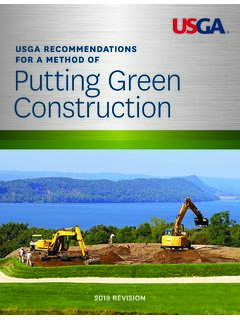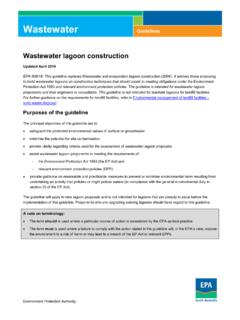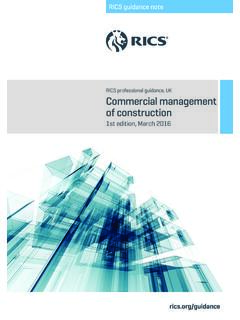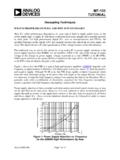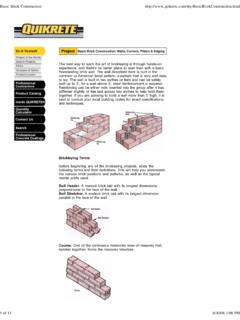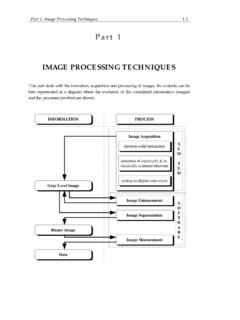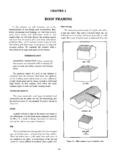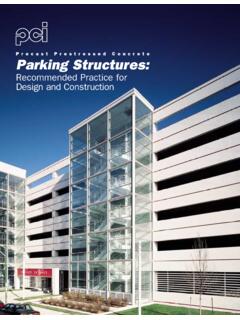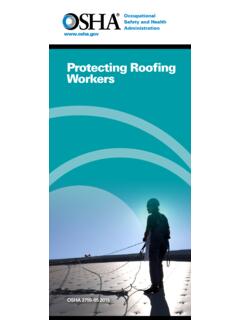Transcription of Estimating Total Cost of Bridge Construction using ...
1 Estimating Total Cost of Bridge Construction using Accelerated Bridge Construction (ABC) and Conventional Methods of Construction PROGRESS REPORT Period Ending June, 2016 Submitted by Mohammed Hadi, , PE Wallied Orabi, Yan Xiao, , PE Jianmin Jia, Candidate Department of Civil and Environmental Engineering Florida International University, Miami, Florida Submitted to Atorod Azizinamini Director, ABC-UTC September 2016 A. DESCRIPTION OF RESEARCH PROJECT According to the Department of Transportation status report of 2013, of the Total bridges in the United States are either considered structurally deficient or functionally obsolete.
2 There is therefore a pressing need for significant Bridge repair and replacement efforts (DOT 2013). These Bridge projects create a challenge to State Transportation Agencies (STAs) across the country in order to minimize the associated traffic disruptions in a safe way, while preserving the quality of the work and fulfilling budget constraints. In an effort to combat this challenge, the Federal Highway Administration (FHWA) is adopting and promoting the implementation of accelerated Bridge Construction techniques (ABC) through the Every Day Counts initiative to expedite project delivery and minimize their impacts on the transportation network (FHWA 2012).
3 Accordingly, a number of STAs are implementing ABC techniques and experienced positive outcomes in a significant number of Bridge replacement and/or rehabilitation projects. However, ABC techniques are often associated with high initial costs, which deters many STAs from a wider implementation of these techniques (TRB 2013). In addition, the impact of adopting these accelerated techniques to current Bridge design and Construction processes is not fully understood, which adds to the complexity of choosing ABC over conventional methods in Bridge projects.
4 Therefore, there is a pressing need to provide decision makers with a comprehensive tool for Estimating the Total cost of ABC projects including: Construction , indirect, agency cost, and user costs. This tool will facilitate comparing the Total cost of Bridge repair and replacement work under both ABC and conventional methods. Problem Statement Accelerated Bridge Construction (ABC) methods have been successfully used by many STAs for both planned and emergency Bridge projects. However, the Total cost of ABC projects are not completely understood let alone being included in the decision making process for such projects.
5 This Total cost include: Construction , indirect, agency, and user costs. These costs need to be analyzed and estimated to support better decisions in selecting ABC versus conventional Bridge Construction methods. However, this analysis and estimation process is a complex process as it involves the evaluation of different types of costs including but not limited to: Construction costs, engineering and inspection costs, user costs (with consideration of impacts on mobility, reliability, motorist and Construction worker safety, and emission), right of way, quality of work, and the impact on surrounding communities and businesses (Salem & Miller 2006).
6 Unfortunately however, the lack of appropriate tools inclusive of the aforementioned factors does not allow the agencies to fully realize the true benefits and appreciate the true costs of ABC compared to conventional Bridge Construction . In order to address these gaps in both the body of knowledge and current ABC practices, the objectives of this project are to: (1) better understand and estimate the costs associated with ABC; and (2) Analyze different ABC case studies to determine the drivers and barriers for implementing ABC as well as performing a benefit-cost analysis.
7 Brief Description of Current Practices of ABC Decision Making There are a number of existing tools that are currently in use by or available to STAs to support their decision-making related to ABC; these tools can be categorized under two main categories: qualitative and AHP-based quantitative tools, as shown in Figure 1. Figure 1: Current Decision Making Tools for Bridge Construction Projects Qualitative tools currently in use by STAs include flowcharts, matrices, and questionnaires. One of the most widely used qualitative tools is the FHWA flowchart (FHWA 2005) that is designed to assist decision makers in determining whether the use of prefabricated bridges is suitable for their projects or not.
8 The flowchart (Figure 2) includes questions related to major factors that might trigger the use of ABC, such as: average daily traffic; whether it is an emergency Bridge replacement project; whether the Bridge is on an evacuation route; detours and lane closures times; and whether the Bridge Construction is on the critical path of the project schedule. If the user answers no to all these questions, the use of ABC is only justified if it improves safety and/or if the Construction cost is less than that of conventional Bridge Construction .
9 Alternatively, if the answer to any one of five aforementioned questions is yes , then the decision maker should consider ABC after examining the Bridge s need for rapid Construction , and the associated safety and costs impacts. Similar decision making practices are followed in other qualitative tools, such as the FHWA matrix and STA questionnaires. This kind of subjective practice that uses a yes/no and/or Likert scale approaches to evaluate ABC projects is insufficient in identifying and evaluating the true costs of ABC methods.
10 Figure 2: Flowchart for PBES Decision Making AHP-based quantitative tools are also used for ABC decision making. One of these tools, and perhaps the most well-known ABC decision making tool, is developed by the Oregon Department of Transportation (ODOT) in collaboration with seven other DOTs (Doolen et al. 2011). In this tool, five main decision criteria are considered: direct cost, indirect cost, schedule constraints, site constraints, and customer service. Furthermore, a set of sub-criteria was developed for each of these five criteria as seen in Figure 3.
